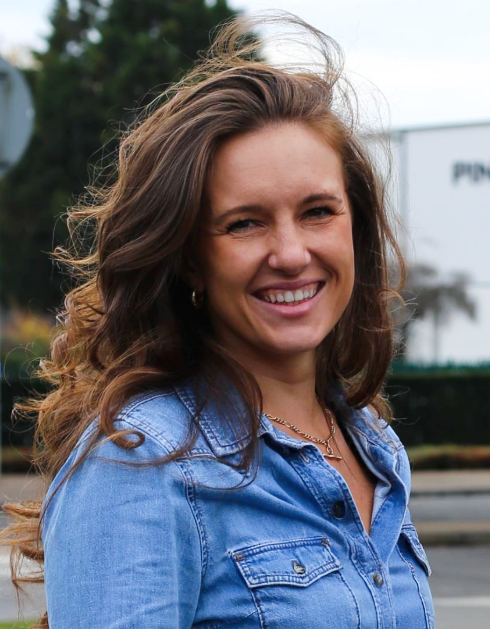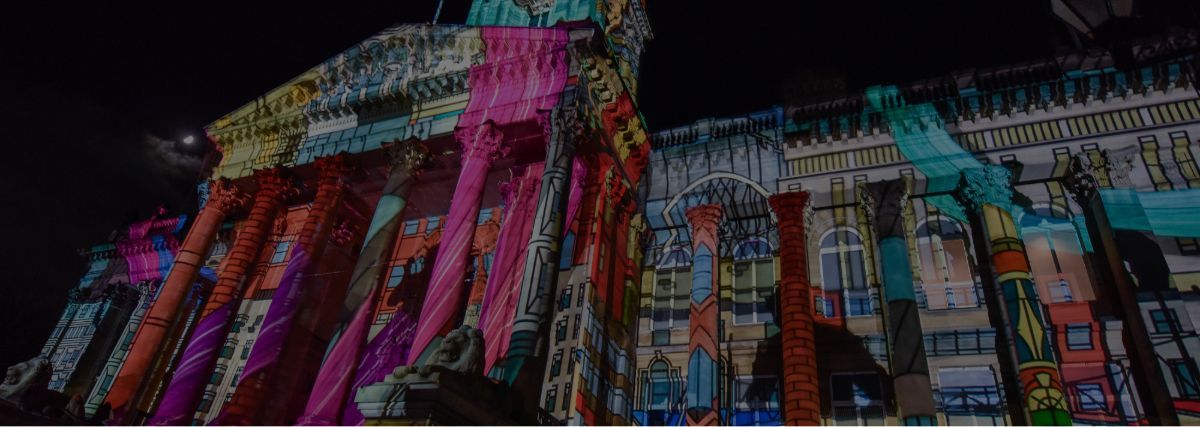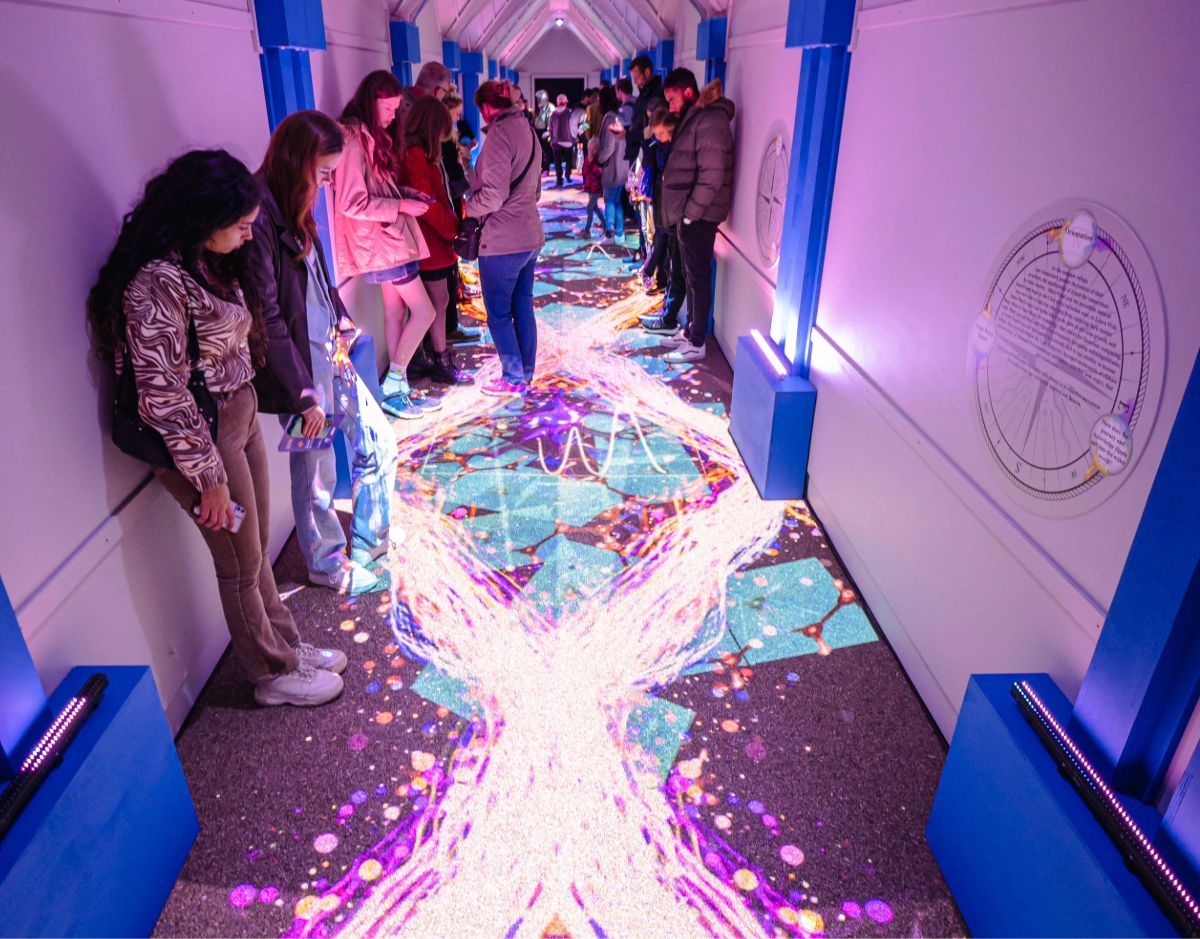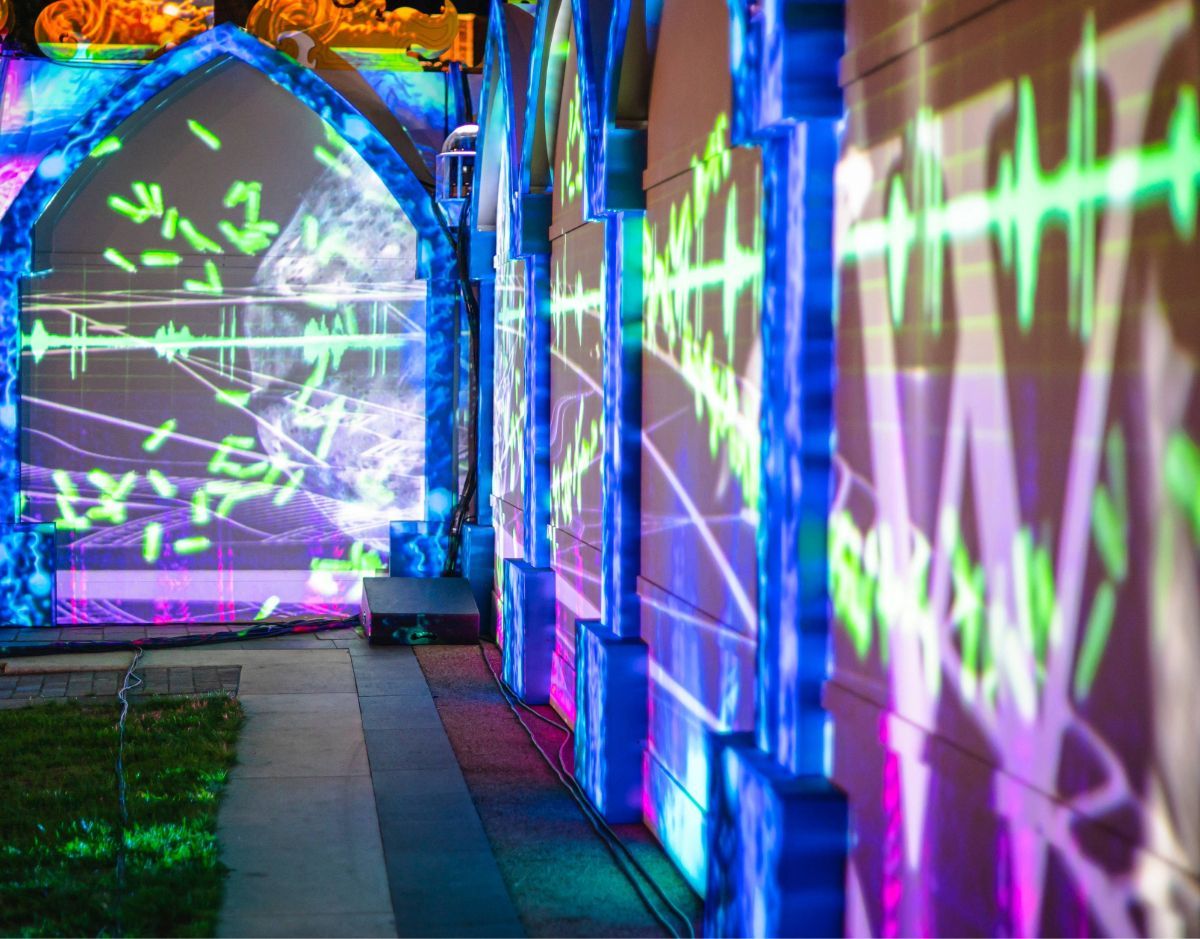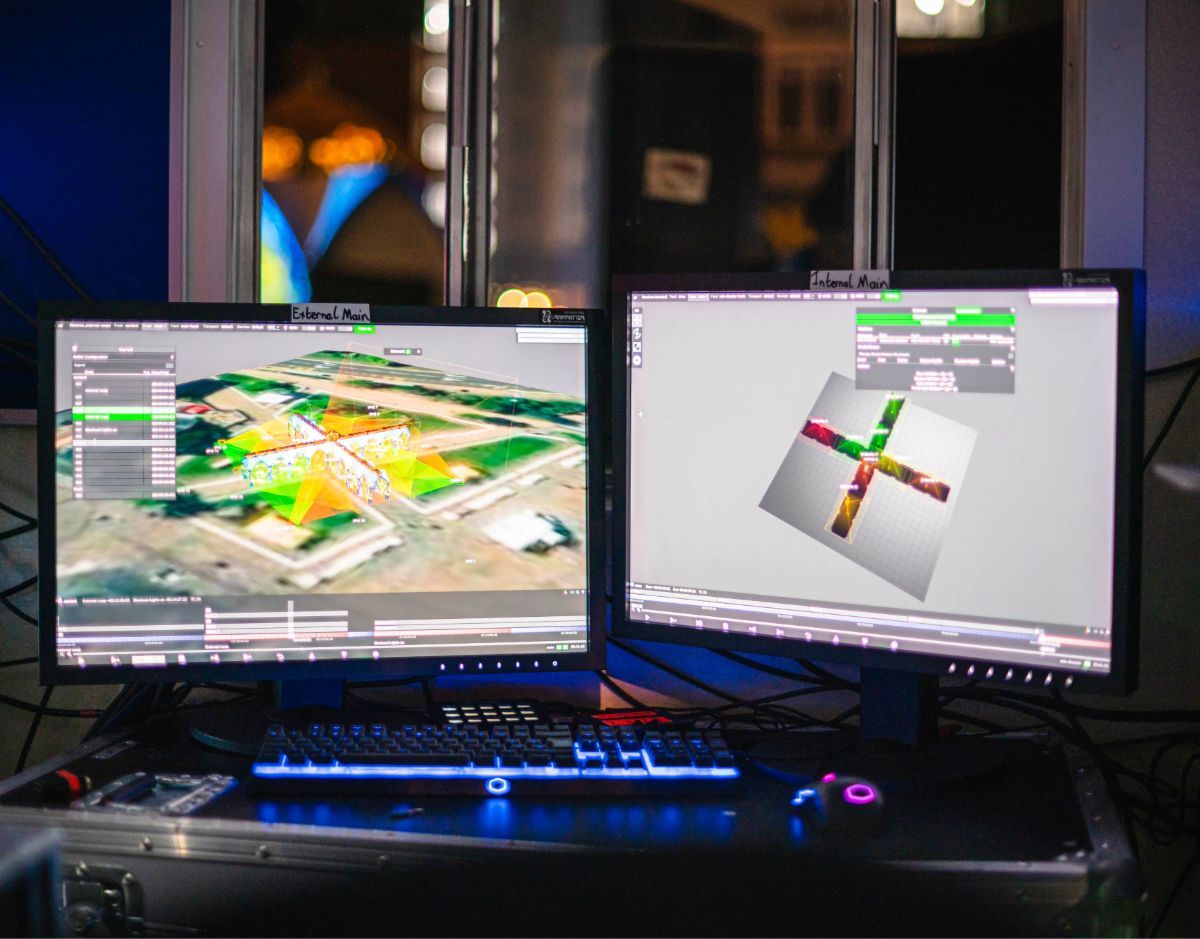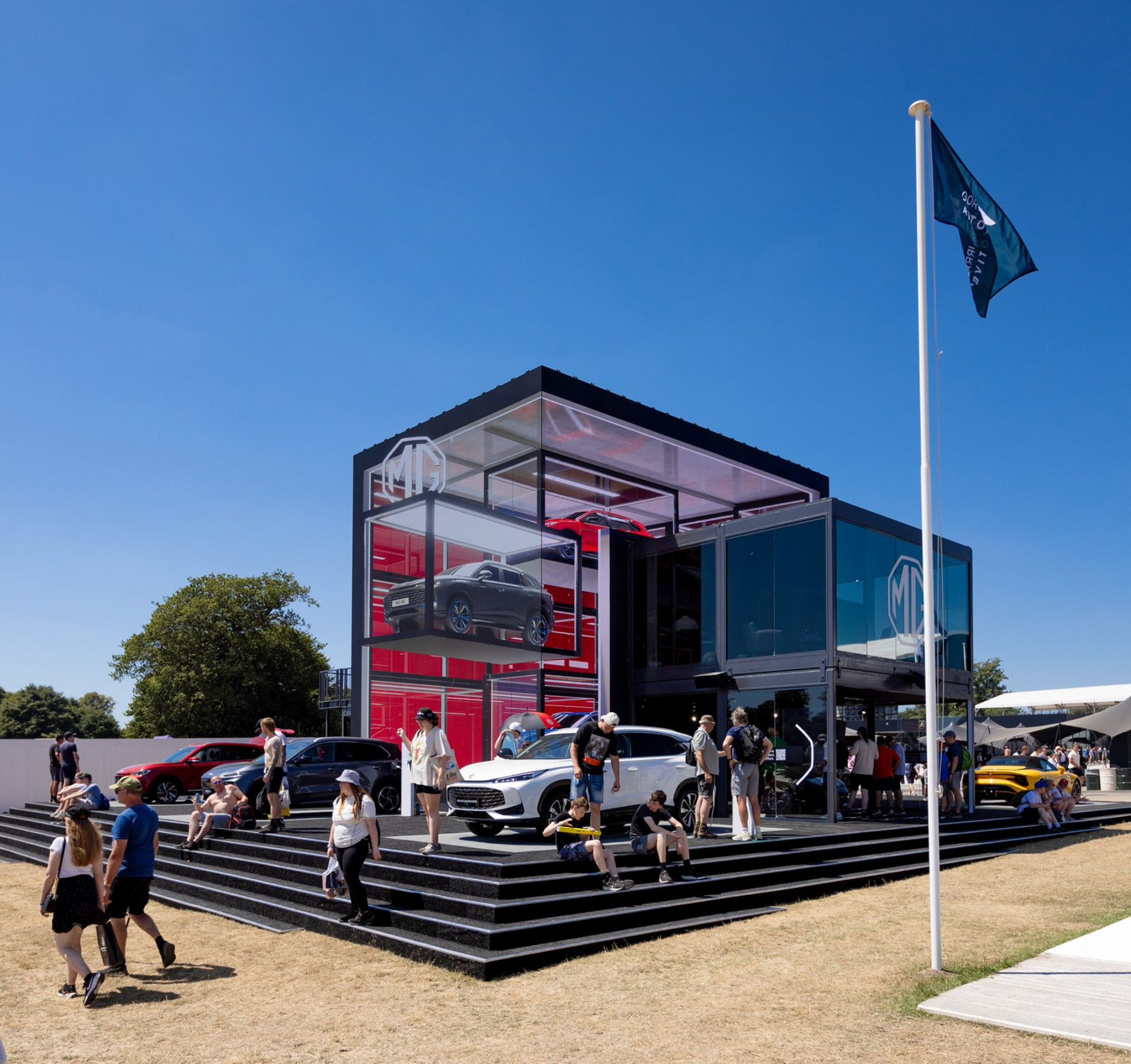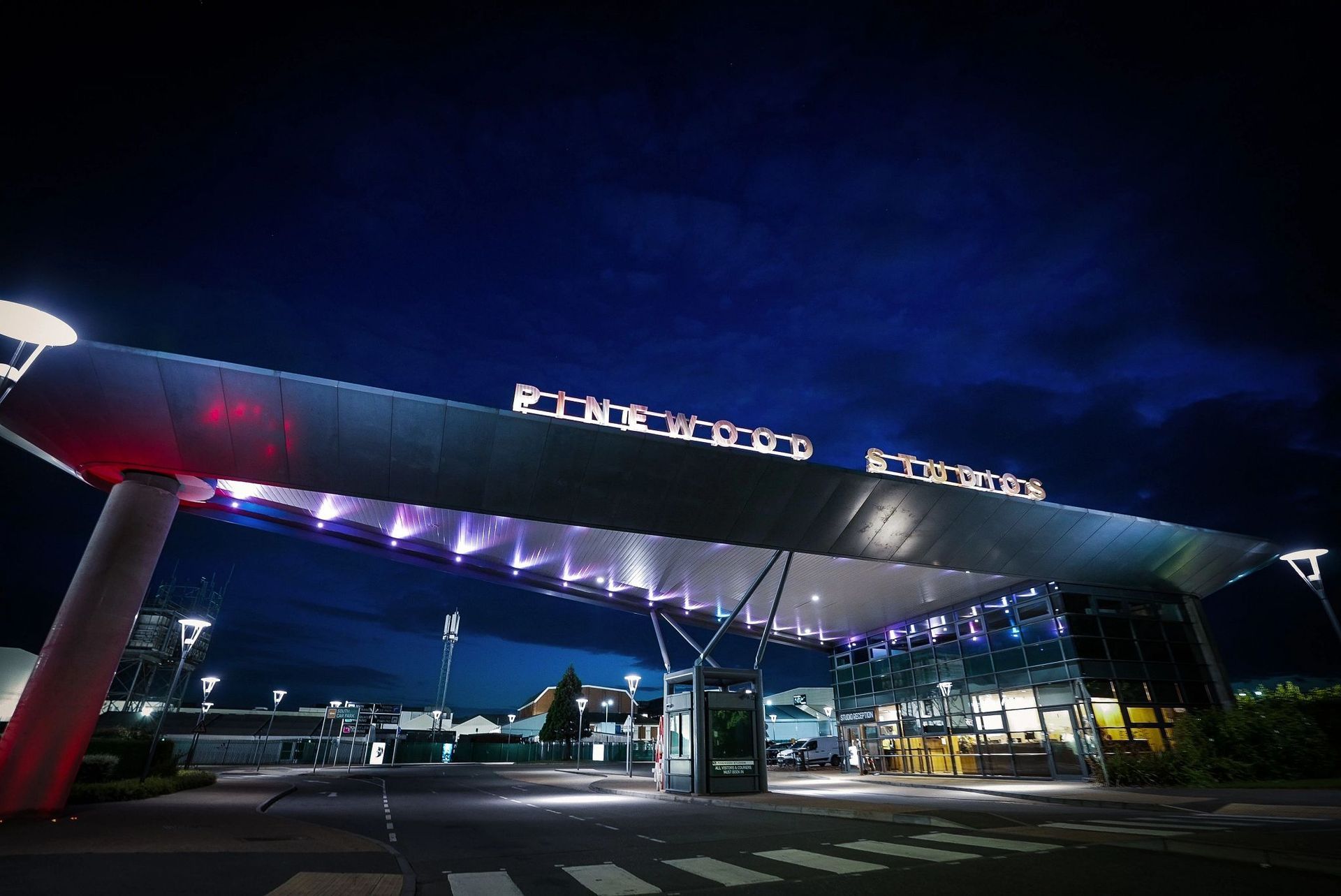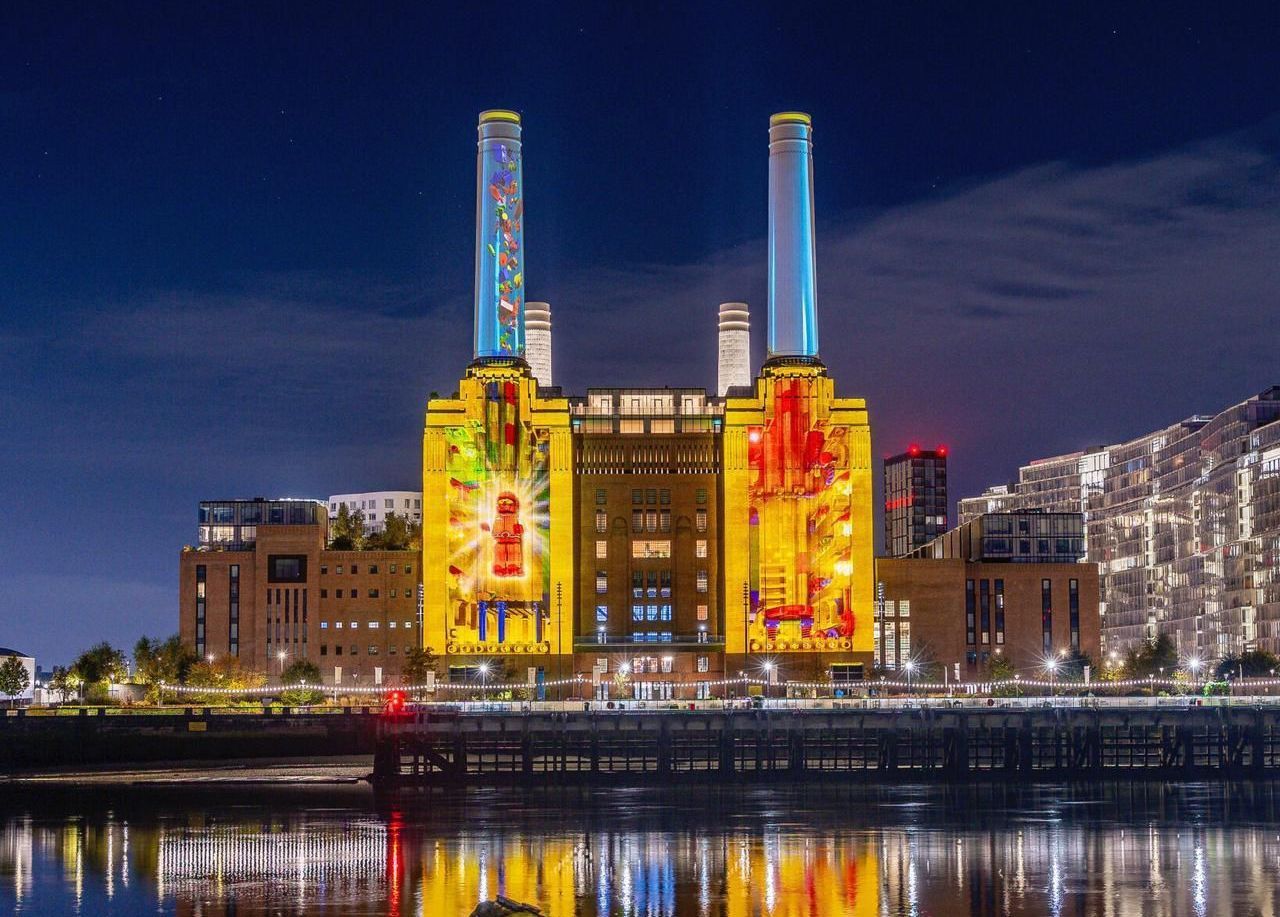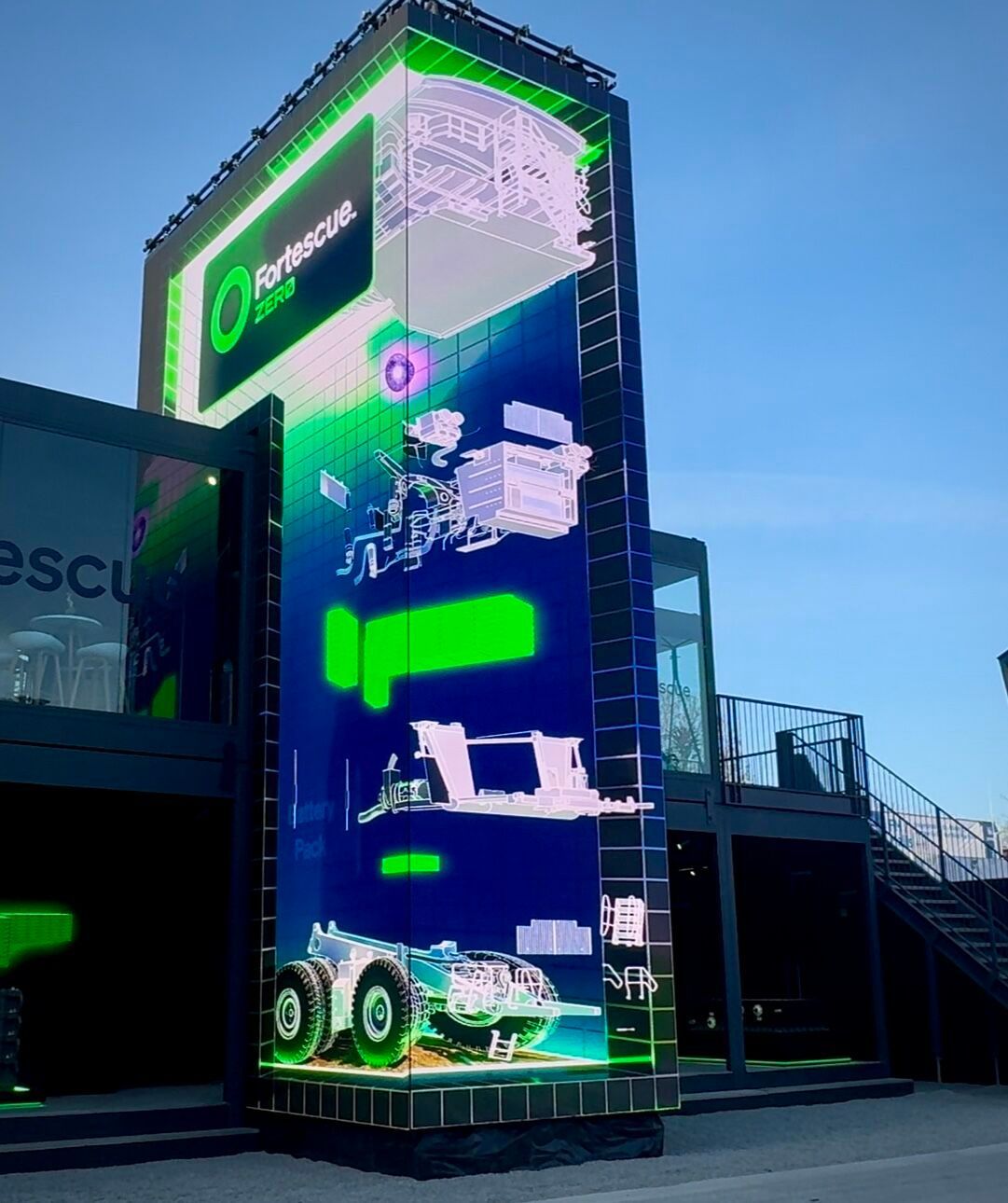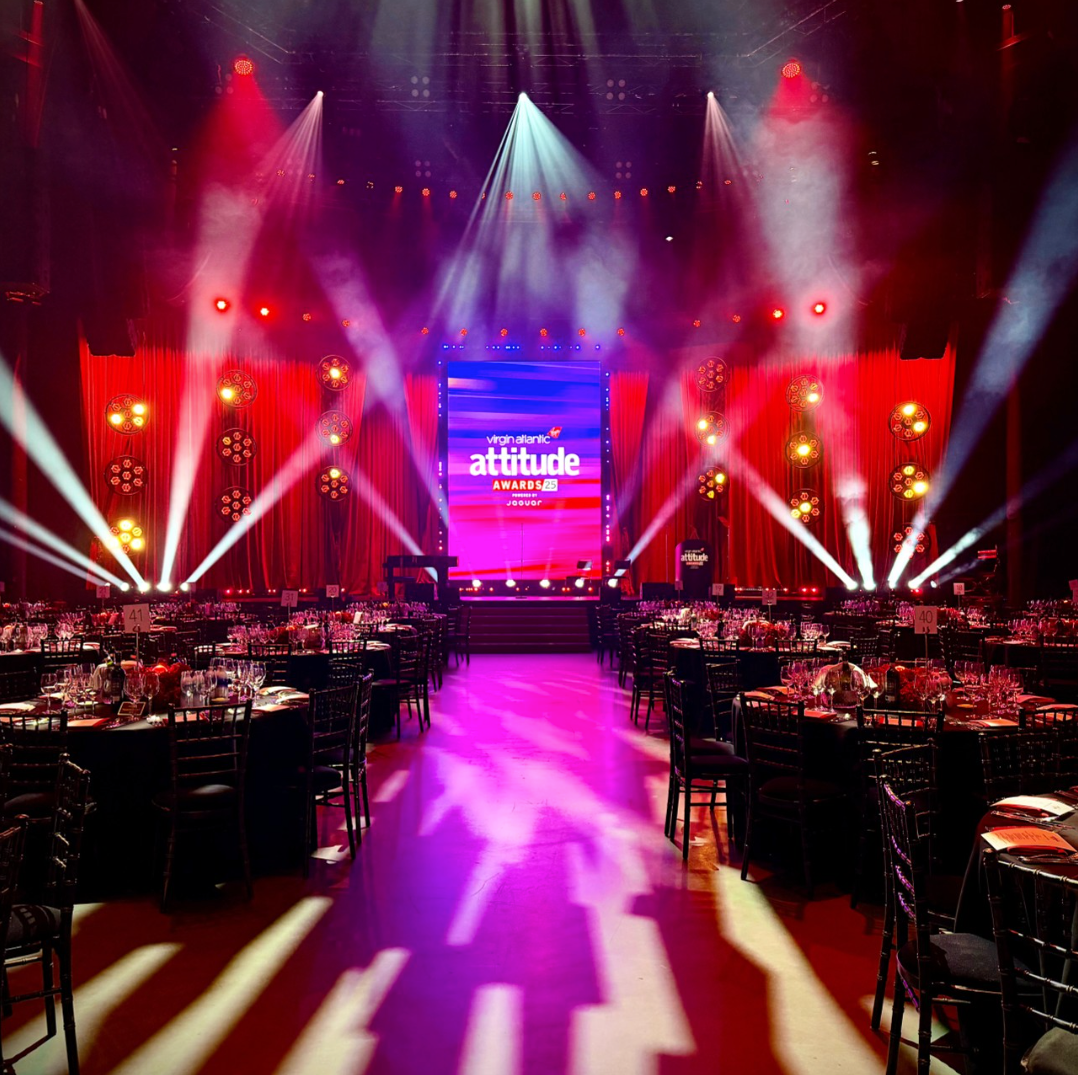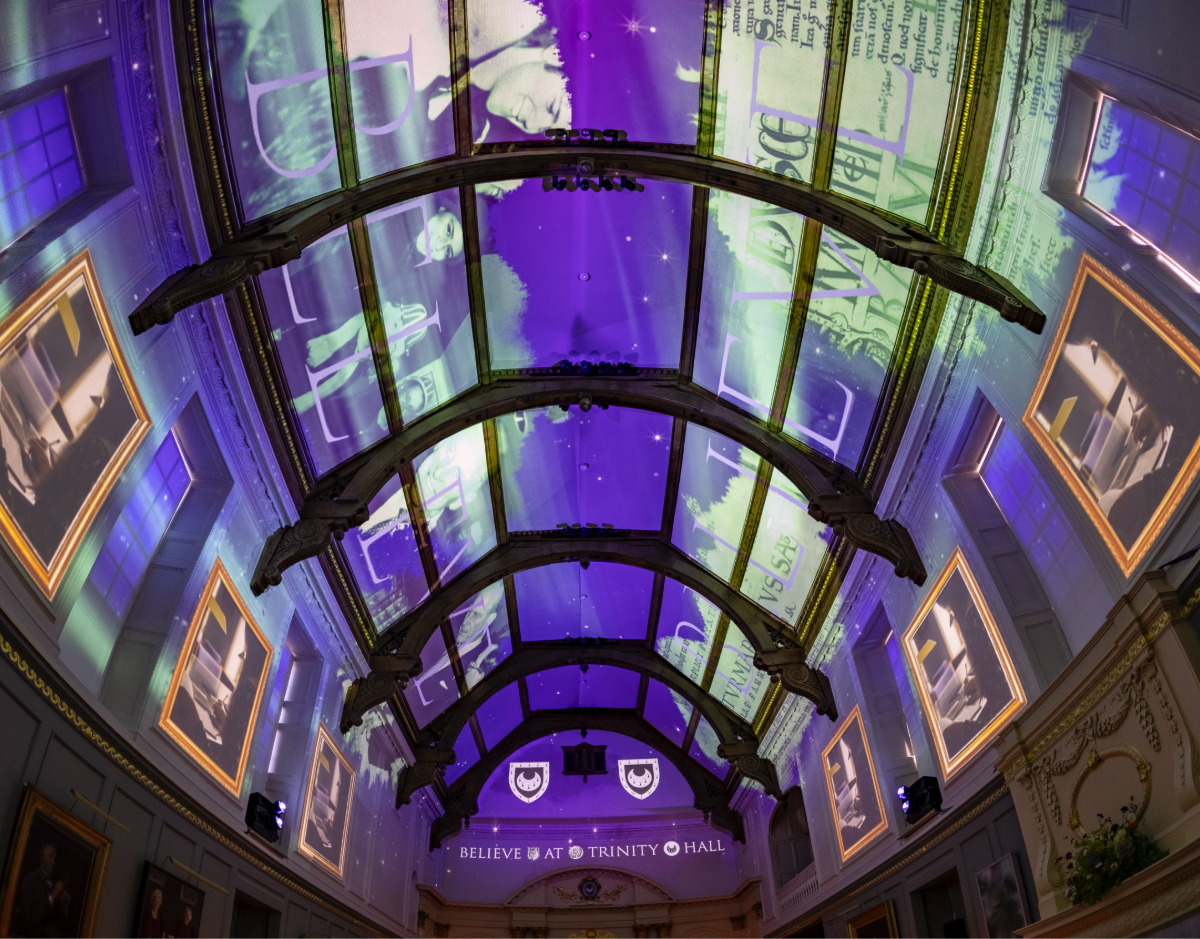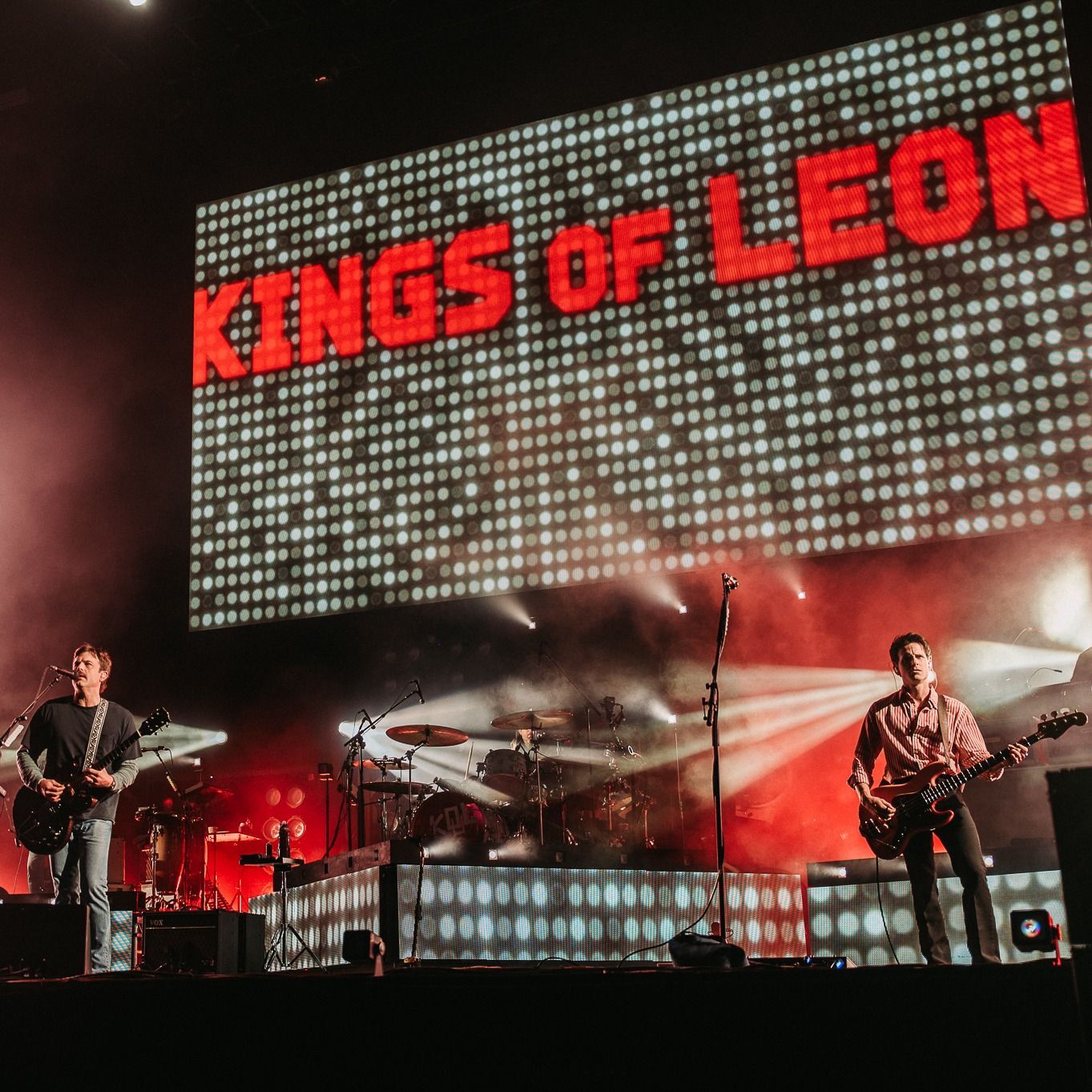The Compass – British Science Festival
Jubilee Square, Leicester
At the heart of the British Science Festival 2022, an extraordinary installation named The Compass brought science and storytelling together through the power of immersive technology. Commissioned by Illuminos, and delivered by our Graymatter Video team, the project pushed the boundaries of technical production to transform abstract scientific ideas into vivid, immersive experiences.
The Challenge:
Illuminos required a complex structure to act as both an exhibition space and a projection canvas. The installation needed to perform in dual modes: a daytime interior experience where visitors could step inside and engage with research narratives mapped onto the floor, and an evening spectacle with fully mapped visuals displayed on all eight external façades.
The project introduced a host of logistical and creative challenges. Projection equipment had to be discreetly positioned to maintain aesthetic integrity. Every internal surface, including the entire floor, had to be brought to life with animated content. Audio systems needed to ensure clarity throughout the circular footprint, both inside and out. The projection needed to be precisely aligned with a temporary structure, requiring close integration with its design and fabrication. Additionally, the team needed to support real-time synchronisation between internal visuals and external lighting to maintain cohesion across all zones of the experience.
The Solution
From the outset, Graymatter worked closely with Illuminos and structural designers M3 Industries, integrating technical planning into the build process. Using a detailed 3D model provided by M3, our team optimised it for use within disguise servers, allowing us to design the projection mapping arrays in a virtual environment. This enabled the early identification of projector and speaker positions and allowed precise instructions to be relayed back to the structure’s engineers, ensuring the design would accommodate all required hardware from the start.
For the exterior projection, sixteen Panasonic RZ12 projectors were deployed, each fed a unique video signal through a robust custom HDSDI fibre system. These were linked back to disguise GX2c media servers, configured with director, actor, and automatic failover roles. A centralised control room, powered by Blackmagic 40x40 video hub matrices, ensured that any failure would be mitigated seamlessly, providing 24/7 content stability.
On the audio side, a d&b Audio Y-series point source system provided flawless 360-degree coverage outside the structure. Internally, eight d&b E8 speakers, carefully housed outside with their audio directed inward, ensured pristine clarity and immersion.
Inside, eight Panasonic MZ10k short-throw projectors were housed in custom waterproof casings that allowed only the lenses to protrude into the structure. These casings were discreetly embedded into the design, appearing as architectural features rather than equipment. To complement the visuals, iMAG and Graymatter added a lighting layer using ROE Visual LED strips embedded around the base of the internal walls. These strips were powered by Brompton SX40 processors and precisely mapped to the projection content, creating a vibrant and unified sensory experience.
Once the physical setup was established, we worked closely with Illuminos to unwrap and translate the 3D surface into a cohesive 2D content template. By unwrapping the geometry from the centre point outwards, the team achieved a seamless animation layout that maintained creative fluidity across all facets of the octagonal form. This method provided the content creators with maximum flexibility while preserving the integrity of the mapped surfaces.
The Result Res
By day, The Compass offered a calm and reflective space where visitors could wander through flowing scientific stories, experiencing research as a visual journey underfoot. By night, the exterior erupted into life—a beacon of light and innovation that lit up Jubilee Square. Audiences were captivated by the duality of the experience and the precision with which technology had been used to tell deeply human stories of discovery.
For Graymatter Video, this project was a powerful demonstration of the impact that meticulous planning, collaborative design, and cutting-edge AV delivery can achieve. It showcased our ability to deliver immersive storytelling through video, audio, lighting, and projection mapping, blending creative vision with world-class execution.
Credits
End Client: Inspirate
Client: Illuminos
Fabrication: M3 Industries
Equipment used:
- ROE Visual Black Quartz 4 LED Screen
- Megapixel MVR 4K Processors
